Marketing
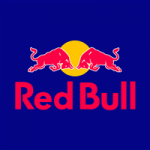
An effective utilization of marketing communication mix is one of the core sources of competitive advantage for Red Bull. According to its marketing message, ‘Red Bull gives you wings’, the company has succeeded in associating the consumption of Red Bull with an enhanced mental and physical performance and leading an active and adventurous life. Red Bull marketing communication mix integrates the following: Red Bull TV online channel addresses the interests of the target customer segment promoting the brand at the same time The Red Bulleting online magazine covers the topic of sports, culture and lifestyle indirectly promoting the brand to the target customer segment Red Bull owns a set of sports teams such as RB Leipzig,FC Red Bull Salzburg, Red Bull Brasil, New York Red Bulls, Red Bull Racing, Scuderia Toro Rosso Red Bull employs about 150 people for content marketing and media strategy[1] Advertising Print and media advertising is one of the main tools within Red Bull marketing strategy. Red Bull Media House integrates fully dedicated print, TV and digital media platforms. Along with communicating Red Bull marketing message to the target customer segment, the media house offers advertising opportunities on B2B basis, thus creating an additional source of revenues for Red Bull BmbH. Print TV Online Bergwelten The Red Bulletin Servus in Stadt & Land Terra Master Magazin Seitenblicke Servus TV ServusTV.com Red Bull Media House media platforms Beyond Red Bull Media House platforms, the company also places print and media advertisements into newspapers, magazines and TV channels popular with the target customer segment. Advertising via billboards in major cities and selected locations also plays an important role in Red Bull marketing strategy. Sales Promotion The following forms of sales promotions techniques are used by Red Bull vendors such as grocery stores, supermarket chains, bars and restaurants and retail other outlets: 1.…
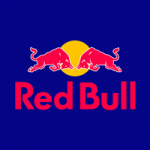
Red Bull segmentation, targeting and positioning explains which specific group of the population the company targets in order to sell their energy drinks to, by dividing the population into various segments. Segmentation involves dividing population into groups according to certain characteristics, whereas targeting implies choosing specific groups identified as a result of segmentation to sell products. Positioning refers to the selection of the marketing mix the most suitable for the target customer segment. Red Bull uses mono-segment type of positioning and accordingly, the company appeals to the wants and needs of a single customer segment. Red Bull target customer segment represent busy individuals who are overly active in their personal and professional lives and who have are fascinated by extreme sports. The following table illustrates Red Bull segmentation, targeting and positioning: Type of seg-mentation Segmentation criteria Red Bull target customer segment Red Bull Energy Drink Red Bull Sugarfree Red Bull Zero Calories Red Bull Editions: cranberry, lime, blueberry, tropical fruits Red Bull Simply Cola Geographic Region Domestic & international Domestic & international Domestic & international Domestic & international Den- sity Urban/rural Urban/rural Urban/rural Urban/rural Demographic Age 16 – 30 26 – 45 18 – 36 16 – 40 Gender Males & Females Males & Females Males & Females Males & Females Life-cycle stage Bachelor Stage young, single people not living at home Newly Married Couples young, no children Bachelor Stage young, single people not living at home Newly Married Couples young, no children Income High High High High Occu-pation Students, employees, professionals employees, professionals Students, employees, professionals Students, employees, professionals Behavioral Degree of loyalty ‘Hard core loyals’ ‘Hard core loyals’ ‘Soft core loyals’ ‘Switchers’ Bene-fits sought Enhanced performance Sense of belonging Enhanced performance Sense of belonging Enhanced performance Sense of belonging Sense of belonging Personality Ambitious Ambitious…
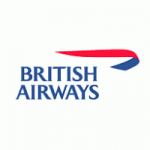
British Airways marketing communication mix integrates the elements of print and media advertising, sales promotions, events and experiences, public relations and direct marketing in the manners discussed below. Advertising British Airways uses print and media advertising as an important part of its marketing strategy. In one of the most notable cases, in January 5, 2016, the airline took over all of the advertising space in popular Time Out London travel magazine as part of an ambitious marketing campaign.[1] British Airways television ads are marked with appeal to basic and important human emotions such as love, kindness and excitement. For example, ‘Fuelled by Love’ video clip advertisement directed by Neeraj Ghaywan tells the tale of Helena Flynn, a flight attendant who falls in love with India. “The ad is full of small moments of human kindness—from helping an old woman put on her socks to inviting a stewardess in a strange land into your home and heart”[2] Importantly, British Airways also sells its own advertising space on its online and offline platforms. The airline’s online advertising platform is its official website ba.com, whereas offline advertising platforms include traveller boarding passes and advertising spaces in 54 British Airways lounges worldwide. Moreover, viral marketing is being increasingly integrated into British Airways marketing strategy. The airline frequently taps into the sentimentality of many expatriates’ desires to visit their faraway homelands and families[3]. Successful viral marketing campaigns ‘Visit Mum’ and ‘The Welcome of Home’ can be mentioned to justify this point. Sales Promotion British Airways uses sales promotions during festive seasons and other occasions. Specifically, the airline uses the following forms of sales promotions: 1. Money off coupons. Various vendors, travel companies and websites such as retailmenot.com, coupons.com, couponcabin.com and fyvor.com offer discount coupons for British Airways travel tickets. However, British Airways does not offer…
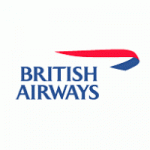
British Airways 7Ps of marketing integrates important elements of the marketing mix that need to be addressed by marketing managers taking into account taking into account the characteristics of the target customer segment. The most important elements of the marketing mix that consists of product, place, price, promotion, process, people and physical evidence. In January 2015 British Airways announced that “will split its marketing department and bring the unit closer to its commercial operations as part of a major restructure”.[1] Product. British Airways offers airline services of a premium segment. A high level of service customization and the abundance of choice is one of the core advantages of the airline’s competitive advantage. For example, in the World Traveller cabin, customers can choose from a wide range of Taste of the Far East’, ‘Gourmet Dining’, ‘Taste of Britain’, ‘Great British Breakfast’, ‘Healthy Choice’ and ‘Vegetarian Kitchen’.[2] Moreover, the airline’s service provision is associated with a high level of digitization and an extensive integration of information technology. For example, in 2015 British Airways launched its app for the Apple watch. A simple swipe opens the British Airways app, which was re-designed to fit the Apple Watch screen. It then displays a summary of the customer’s next flight, the flight number, route, departure time, flight status, a countdown to the departure time and the weather at the destination.[3] Place. British Airways flies to more than 400 destinations worldwide and it has the greatest presence in Heathrow, Gatwick and London City airports. British Airways utilizes online sales channel to sell its tickets and air tickers can also be purchased offline via sales agents and other intermediaries. The range of sales support measures offered by the airline include the possibility to hold flights and the price for up to 72 hours after the booking. Price. British…
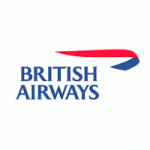
British Airways segmentation, targeting and positioning refer to ways in which the airline company identifies certain individuals among the general public to offer their service packages. Segmentation involves dividing population into groups according to certain characteristics, whereas targeting implies choosing specific groups identified as a result of segmentation to sell products. Positioning refers to the selection of the marketing mix the most suitable for the target customer segment. British Airways follows multi-segment concentration marketing strategy by offering four different service packages to different customer segments. Specifically, British Airways targets different customer segments for its four levels of services: economy, premium economy, executive and first class. The following table illustrates segmentation, targeting and positioning of each category of British Airways services: Segmentation bases Target segment Economy class Premium Economy Executive Club First Class Geographic Region Domestic flights in UK Europe and international flights Selected international flights Europe and international flights Selected international flights Density Urban & rural Urban & rural Urban Urban Demographic Age Kids, teenagers, middle-aged, old-aged Teenagers, middle-aged Middle-aged, old-aged Middle-aged, old-aged Gender Male, female Income Low Middle High High Occupation Students, salaried Students, salaried Businessmen Professionals Businessmen Professionals Education High school Bachelor’s Technical Bachelor’s Master’s Business schools Master’s Business schools Social status Low, middle Low, middle High High Family size Joint families Nuclear families Nuclear families Newly married Psychographic Lifestyle Moderate-orientated Moderate-orientated Achievement-oriented Achievement-oriented Personality Easygoing Easygoing Determined Ambitious Behavioural Occasions Regular travel Vacations Business trips Honeymoon Business trips Benefits sought Affordability Value Luxury Convenience Luxury User status Regular traveller Regular traveller First timer, Regular traveller First timer, Regular traveller Attitude Indifferent Indifferent positive Positive enthusiastic Enthusiastic Travel and tourism industry base Customer expectations Low Medium High High Customer image Neutral Neutral to positive Positive…

Introduction The 21st century has been dubbed as an information age (Bell and Blanchfower, 2011) and internet in general, and social media in particular are playing an instrumental role in facilitating the spread of information throughout the globe at a rapid speed. Moreover, increasing levels of interactivity of social media platforms is further contributing to the level of their popularity, and nowadays social media has been effectively adopted by many businesses along a wide range of industries as a highly effective marketing and communication platform. At the same time, the level of use of social media varies between various industries, as well as, individual organisations within a particular industry, and while some organisations are beginning to realise substantial opportunities offered by social media, others are already utilising these opportunities to a full extent. This essay contains a critical evaluation of the influence of social media on the popularity of a tourism destination. The essay starts with discussions about increasing influence of social media on consumer behaviour. This is followed by critical analyses of potential benefits of social media to hospitality organisations. Moreover, issues related to negative impacts of social media on the performance of hospitality organisations are also addressed in this essay. Essay is concluded by providing a set of recommendations to strategic and marketing managers of hospitality organisations in terms of benefiting from opportunities offered by social media to a maximum extent. займ онлайн 19 лет Increasing influence of social media on consumer behaviour in service sector Social media can be defined as “websites and applications that enable users to create and share or to participate in social networking” (Oxford Dictionaries, 2013) and social media has had immense impact on personal and professional lives of many people around the globe at various levels. Types of social media include personal and corporate blogs,…
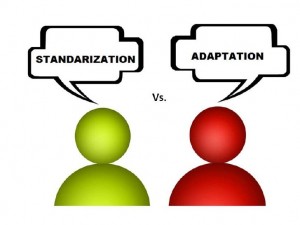
Introduction Modern businesses are granted with vast opportunities in terms of revenue maximisation through entering new markets. Implementation of international market expansion strategy involves strategic-level decision making in relation to global branding strategies, the choice of market entry strategies such as wholly-owned subsidiaries, exporting, licensing, or forming joint-ventures, as well as, deciding on the level of standardisation or adaptation of products and service in new markets. Market entry strategies, branding strategies and the levels of standardisation or adaptation of each single element of marketing mix can be rightly specified as critical success factors directly impacting the success of business in the new market. This essay represents a critical analysis of standardisation vs. adaptation in international marketing in the twenty first century. The essay starts with discussing advantages and disadvantages of standardisation. This is followed by critical analysis of adaptation strategy as an effective customer-orientation strategy by referring to relevant real-life business case studies. The essay is completed by drawing conclusions on standardisation vs. adaptation debate and its relevance to the modern marketplace. Standardisation as a cost saving strategy Standardisation involves using “the same range of products, the same pricing, promotional and location strategies” (Gupta and Randhawa, 2008, p.77). Rationale behind standardisation practices relate to homogenisation of consumer wants and needs due to intensifying forces of globalisation (Winer, 2009). Standardisation can focus on core competitive advantage of the brand and it “allows for a consistent and strong brand to be developed across all markets” (Donelly, 2009, p.150). A Conceptual Model of International Marketing Strategy in relation to standardisation vs. adaptation has been introduced by Theodosiou and Leonidou (2003). According to the model, the degree of standardisation or adaptation is impacted by antecedent factors which have external and internal characteristics. External characteristics of antecedent factors consist of environmental factors, market characteristics, customer issues,…
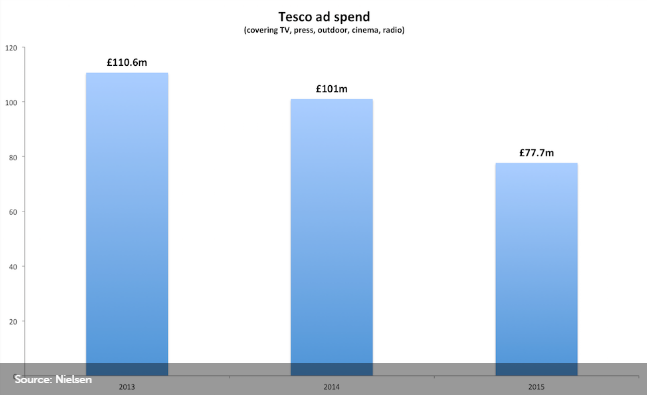
Currently, Tesco marketing strategy aims to regain the trust of stakeholders to the brand. The company is refocusing on “Every Little Helps” strapline to strengthen its core traditional competitive advantage in the marketplace. Certain elements of the marketing communication mix such as print and media advertising, sales promotions, events and experiences and public relations are used by the retail chain to communicate this message to customers. Advertising Tesco marketing strategy makes an extensive use of print and media advertising systematically as a tested channel to send marketing communicate message to current and potential consumers. It is important to note that although Tesco has decreased its advertising budget in 2015 compared to previous years as a part of its massive cost-saving initiatives (see figure below), the efficiency of its print and media advertising has increased. This has been achieved via application of marketing differentiation. For example, during Christmas period, the retail chain eschewed an emotional campaign for humour using the family of characters, played by Ruth Jones and Ben Miller, it had introduced earlier in the year.[1] Changes in Tesco advertising budget Occasionally, Tesco print and media advertising contains valuable advises on cooking or home styling. For example, company recently “released reactive print ads around the Great British Bake Off, with a “bake it or fake it” theme. One page shows what ingredients someone can buy to make the creations shown on TV, the other page shows what they can buy instead.”[2] Sales Promotion Various forms of sales promotions play an integral role within Tesco marketing strategy. The supermarket chain facilitates sales promotions in the following formats: Clubcard. Customers collect 1 point for each GBP 1 spent in Tesco. Several times a year customers receive statements and and vouchers equal to the value of points they have saved. Free gifts. The supermarket chain offers free…
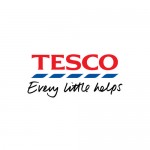
There is a set of macro and micro environmental factors that affect marketing decisions of Tesco marketing management in direct and indirect manners. Macro-environmental factors impacting Tesco marketing decisions are identified through the process of environmental scanning and they include political, economic, social, cultural, technological and legal factors. Micro-environmental factors, on the other hand, relate to the impact of internal and external organisational stakeholders, and the extent of competition in supermarket industry in general. Products and services offered by Tesco and other businesses cannot be attractive to all people in equal terms, because differences in needs and wants among people. Therefore businesses do engage in market segmentation and targeting practices. It can be specified that “market segmentation is based on the generally true concept that the market for a product is not homogenous to its needs and wants”[1]. In simple terms, market segmentation is dividing population members into groups according to their needs, wants and other criteria and developing products and services that aim to satisfy needs and wants of particular groups. Segmentation can be divided into geographic, demographic, psychographic, and behavioural bases. Segmentation, targeting and positioning can be implemented in relation to Tesco brand in general, as well as, its individual products. The Table 2 below specifies target customer segment for Tesco’s own brand TV – Tesco 19-230 18.5 inch Widescreen HD Ready LCD TV DVD Combi with Freeview: Segmentation bases Target customer segment for Tesco Technika 19-230 18.5 inch Widescreen HD Ready LCD TV Geographic Region UK, and 13 other countries Density Rural and urban Demographic Age All age categories Gender Males and females Income Low and middle income category Occupation Students, employees, professionals Education High school, technical, Bachelors, Social status Working class, skilled working class, lower middle class, middle class Family size Single individuals, nuclear…
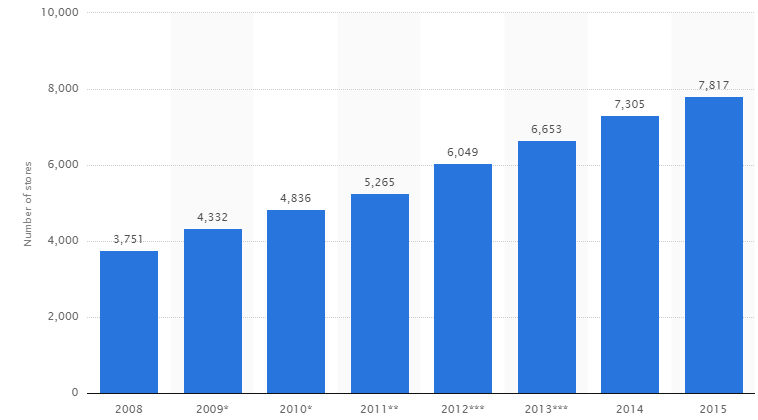
The term marketing mix “is used to describe the tools that the marketer uses to influence demand”[1]. Traditionally, marketing mix contained four elements – product, price, place, and promotion, and additional elements that have added to the concept of marketing mix consist of people, process and physical evidence. Tesco marketing mix is manipulated by the marketing and the senior management to a great extent in order to offer competitive benefits to target customer segment with positive effects on the bottom line. Product. Tesco offers a comprehensive range of products. Specifically, along with food and grocery products the following product categories can be purchased from the supermarket chain: Clothing & jewelry Technology & gaming Health & beauty Home electrical Entertainment & books Home appliances Baby & toddler Garden Toys DIY & Car accessories The range of product categories sold in Tesco stores depend on the type of store with Express stores having the least variety of products and Extra stores offering the widest choice. Moreover, Tesco Bank offers a range of popular banking products such as mortgages, credit cards, personal loans and savings. Place. Place element of the marketing mix relates to locations where customers purchase products and services and the distribution of products to those locations. Tesco utilises two channels to sell its products and services: online and offline. As it is illustrated in figure below, despite the global financial and economic crisis of 2007 – 2009 and other challenges faced by the company, the number of Tesco stores have been consistently increasing for the last eight years to reach 7817 stores in 11 countries by the end of 2015. More than two-thirds of total Tesco sales are made in the UK.[2] Stores are operated in the following format: Metro Express Extra Superstore Changes in the number of Tesco stores worldwide[3] Online sales…
